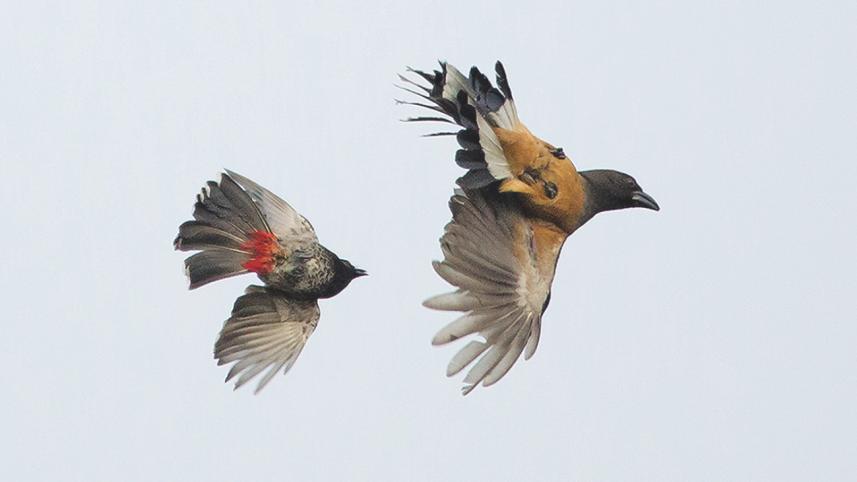Invasive Species

What do these have in common: fire ants, red-vented bulbuls, parrots, water hyacinth, asian carp, common mynas and Burmese pythons?
Before answering, let me relate an incident from last winter.
One morning I was watching birds in a field in Purbachol when I heard a commotion. Several red-vented bulbuls (bulbuli) were flying in circles over a mango tree raising a racket. Suddenly a larger bird, a rufous treepie (harichacha), emerged from the canopy and flew away swiftly. With stunning ferocity, a bulbul chased it. The treepie flew for its life.
The treepie had come too close to a bulbul's nest, and the bulbuls had responded.
The species listed above are some of this planet's most invasive species. This aggressive behaviour of red-vented bulbuls earns them a place in this list.
Invasive species are species of plants or animals that are not native to a particular location but have been introduced there by choice or accident. Sometimes people bring them to a new place (water hyacinth), sometimes they arrive in shipping containers (fire ants), and sometimes they are accidentally released from pet shops during burglaries (parrots). They may have evolved in a challenging native environment and acquired aggressive and predatory traits. In the new environment, which may be relatively benign, they use these traits to muscle out the native species and multiply quickly.
By spreading so quickly, they cause damage to the environment and the economy.
Our most notorious invasive species is the water hyacinth (kochuripana.) A native aquatic plant of South America, it was introduced to our part of the world as well as Africa. Legend says that the introducer was a German lady (the plant is called germoni pona in some parts of Bangladesh) who brought it as an ornamental plant.
However, the water hyacinth grows profusely, creating dense mats that spread across the water, choking off water circulation and killing native plants and fish. It also provides a haven for mosquitoes to breed. A small patch of this plant can double in size in six days. Good intentions paved this road to hell.
Fortunately, in recent years I have noticed many farmers making compost with water hyacinth. Perhaps this will arrest or slow their spread.
In a way, the dense human population of Bangladesh helps keep many invasive species – particularly weeds and plants – in check. And unwelcome fish species are quickly eliminated by our legions of fishermen.
Some countries expend a lot of effort to keep invasive species at bay. A case in point is the fire ant which started migrating northward from South America and entered the US in the 1930s. It was causing great damage to crops and animals, so the US government bombed some south Florida locations in 1967 to stop them. The bombs were not made of explosives, but rather, a pesticide called mirex. Not only did the effort fail in stopping the fire ants' inexorable northward march, but mirex was found to be carcinogenic and persisted in the environment for decades.
Our common myna (bhat shalik) is another feared invasive species, particularly in Australia, where a determined effort to eradicate it using nets reduced its numbers dramatically. Note that the myna and the red-vented bulbul are not invasive to South Asia since they originate here. However they are listed among the world's most dangerous invasive species.
facebook.com/tangents.ikabir



 For all latest news, follow The Daily Star's Google News channel.
For all latest news, follow The Daily Star's Google News channel.
Comments